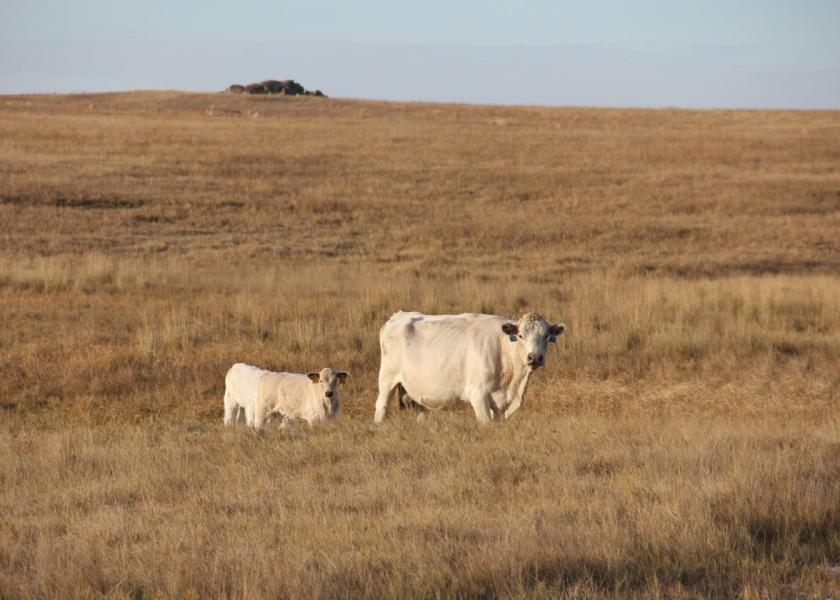Historic Drought Hammers Dakotas, Montana

Crops in the Dakotas and Montana are baking on an anvil of severe drought and extreme heat, as bone-dry conditions force growers and ranchers to make difficult decisions regarding cattle, corn and wheat.
Loss and risk are an assumption in farming; devastation is not. Abandoned acres, fields with zero emergence, stunted crops, anemic yields, wheat rolled into hay, and early herd culls comprise a tapestry of disaster for many producers. When agriculture damage is tallied after a withered spring and summer, crop insurance questions will be of heavy concern for many producers, particularly with a new farm bill on the horizon.
Clark Price grows corn, soybeans and wheat, and raises cattle in Oliver County. His operation in the southwest quadrant of North Dakota is arguably located in the epicenter of affected ground: “Go to South Dakota or Montana and they’re in the same ballpark, if not worse. The grass is gone and people are hurting.”
Stick a shovel in Price’s ground and turn over 8” of parched soil. Since April 1, Price has recorded just 2” of rainfall – well short of the 8” to 10” of precipitation he typically receives.
Price’s scorched wheat fields could yield a feeble 10 bu. per acre. His corn is staggered from 2’ to 5’ tall and likely will yield from rock bottom to 45 bu. per acre. “A lot of us will have to bale wheat and corn. There’s just no way around it with all the hay that simply didn’t get cut,” he says.
And soybeans? Price’s soybeans are flowering at a frail 10” tall, and he doesn’t expect them to make anything. Zero.
His pasture hilltops never greened up to break dormancy and he estimates pasture production at 35% of normal. Many producers in his community are culling herds early, pulling 300 lb. to 400 lb. calves to conserve feed to maintain base livestock numbers. “Nobody has enough hay to make it through winter and I’ve heard of people driving 200 miles just to buy bales,” he explains.
Price, 52, believes the current drought is the most extreme he’s experienced in his farming career: “It was tough in 1988, but right now it’s the worst I’ve ever seen.”
Dan Wogsland; executive director of the North Dakota Grain Growers Association (NDGGA), estimates 40% of the western North Dakota wheat crop has been rolled into hay: “As you leave the Red River Valley and go west, it gets increasingly dry across the state. North Dakota wheat is in serious trouble. It hurts to see so many bales in wheat fields.”
Wogsland has seen many wheat fields that won’t yield 5 bu. per acre. Echoing Price, Wogsland hasn’t seen comparative drought since the late 1980s: “Everyone remembers 1988, but a lot of people say it’s not been this dry since the 1930s.”
Soybean acreage is predominantly concentrated in the eastern half of North Dakota and has avoided the intense drought affecting the central and western portions of the state. However, North Dakota soybean planted acres jumped to 7 million acres in 2017 (6 million in 2016), and Nancy Johnson, executive director of the North Dakota Soybean Growers Association (NDSGA), is uncertain about harvest expectations. “Soybeans haven’t been terribly impacted like we’ve seen in the cattle and wheat industries,” she notes. “However, there’s still a lot of the growing season left and our extra 1 million soybean acres above 2016 could end up being in drought areas. Yields are made in August, so any August rain might help yields.”
The vast majority of corn (3.7 million acres) is planted in the southeast quarter of North Dakota, but Dale Ihry, executive director of the North Dakota Corn Growers Association (NDCGA), warns that drought is on the doorstep, and without rain, even a potential trend line yield will decrease rapidly: “Potential yields are totally up in the air, but we could get a trend line yield of 130 bu. per acre if we’re lucky. Some people think because of silage acres or affected acres in the west and central parts of the state, we’ll go below trend line yield in 2017.”
North Dakota is a high participant player in crop insurance with roughly 21 million acres. (Nearly all eligible acres in the state are placed in the crop insurance program.) “In our NDCGA farm bill survey earlier this spring, the No. 1 grower priority was to protect crop insurance in the coming farm bill,” Ihry says.
With 22 million crop acres in North Dakota each year, only approximately 300,000 are irrigated. Dryland farming is the game. When severe drought hits as it has in the spring and summer of 2017, it strikes a hammer blow. “The crops are terrible, just hard to describe,” Wogsland concludes. “We’re talking about near-bare fields where a striped gopher can run from one end to the other and you can watch it the entire time in plain view. It looks like devastation.”







